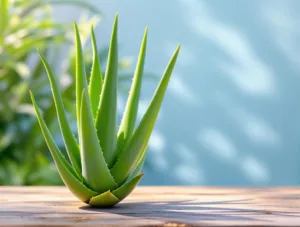The Ultimate Guide to Managing Oily Hair: Causes, Solutions, and Long-Term Care
Introduction
Oily hair is a common yet frustrating issue that affects millions of people worldwide. Whether your hair becomes greasy just hours after washing or you struggle with a perpetually slick scalp, excess oil production can lead to limp, unclean-looking hair and even contribute to dandruff and acne. While sebum—the natural oil produced by sebaceous glands—is essential for maintaining healthy hair and scalp, an overproduction can leave you feeling self-conscious and constantly reaching for dry shampoo.
This comprehensive guide explores the root causes of oily hair, debunks common myths, and provides science-backed solutions to regulate oil production naturally. From choosing the right hair care products to adjusting your lifestyle habits, we’ll cover everything you need to know to achieve balanced, fresh-looking hair.
Understanding Oily Hair: What Causes Excess Sebum Production?
Before diving into solutions, it’s crucial to understand why some people struggle with oilier hair than others. Several factors contribute to excessive sebum production:
1. Genetics and Hormonal Influences
Your genetic makeup plays a significant role in how much oil your scalp produces. If your parents had oily hair, you’re more likely to experience the same. Additionally, hormones—particularly androgens like testosterone—stimulate sebaceous glands, which is why oily hair is common during puberty, pregnancy, and menstrual cycles.
2. Overwashing and Harsh Shampoos
Ironically, washing your hair too frequently can worsen oiliness. Stripping your scalp of its natural oils signals your sebaceous glands to produce even more sebum to compensate. Sulfate-heavy shampoos can exacerbate this issue by drying out the scalp.
3. Poor Diet and Hydration
A diet high in processed foods, sugars, and unhealthy fats can increase sebum production. Conversely, dehydration can trick your body into producing more oil to prevent moisture loss.
4. Environmental Factors
Humidity, pollution, and excessive heat can contribute to oil buildup. Additionally, touching your hair frequently or using heavy styling products can transfer oils from your hands to your strands.
5. Incorrect Hair Care Routine
Using heavy conditioners, not rinsing products thoroughly, or applying oils directly to the roots can make hair appear greasier faster.
Debunking Common Myths About Oily Hair
Several misconceptions surround oily hair care, leading to ineffective or even damaging practices. Let’s clarify some of the most persistent myths:
Myth 1: “You Should Wash Your Hair Every Day”
Frequent washing can strip the scalp, triggering rebound oil production. Most experts recommend washing every 2-3 days for oily hair.
Myth 2: “Dry Shampoo Can Replace Washing”
While dry shampoo absorbs excess oil, it doesn’t cleanse the scalp. Overuse can lead to clogged follicles and irritation.
Myth 3: “Oily Hair Doesn’t Need Moisture”
Even oily hair needs hydration—skipping conditioner can lead to dry ends while the scalp overproduces oil. Opt for lightweight, oil-free conditioners.
Myth 4: “Brushing Spreads Oil, So Avoid It”
While excessive brushing can distribute oil, gentle brushing with a boar bristle brush can help regulate natural oil distribution.
Effective Solutions for Managing Oily Hair
Now that we’ve covered the causes and myths, let’s explore actionable solutions to control oiliness.
1. Choosing the Right Shampoo and Conditioner
- Look for clarifying shampoos with ingredients like tea tree oil, salicylic acid, or charcoal, which help remove buildup without over-drying.
- Avoid heavy silicones and sulfates, which can irritate the scalp.
- Apply conditioner only to the mid-lengths and ends, avoiding the roots.
2. Adjusting Your Washing Routine
- Wash with lukewarm water—hot water stimulates oil production.
- Massage your scalp gently to improve circulation without overstimulating glands.
- Try co-washing (conditioner-only washing) occasionally if your scalp is sensitive.
3. Incorporating Natural Remedies
- Apple cider vinegar rinses (1 part ACV to 3 parts water) help balance pH and reduce oil.
- Aloe vera gel soothes the scalp and regulates sebum.
- Clay masks (bentonite or kaolin) absorb excess oil when applied to the scalp once a week.
4. Dietary and Lifestyle Adjustments
- Increase omega-3 fatty acids (found in fish, flaxseeds, and walnuts) to support scalp health.
- Reduce dairy and high-glycemic foods, which may trigger excess oil.
- Stay hydrated to prevent the scalp from overcompensating with oil.
5. Styling Tips to Reduce Greasiness
- Use dry shampoo sparingly—focus on the roots and brush out excess.
- Avoid heavy serums and oils near the scalp.
- Opt for loose hairstyles that reduce scalp sweat and oil transfer.
Long-Term Strategies for Balanced Oil Production
Managing oily hair isn’t just about quick fixes—it requires consistent care. Here’s how to maintain balance over time:
1. Train Your Hair to Produce Less Oil
Gradually extend the time between washes to allow your scalp to adjust. Start by adding an extra day between shampoos.
2. Maintain Scalp Health
Exfoliate with a scalp scrub once a week to prevent clogged pores. Consider a probiotic scalp treatment to support microbiome balance.
3. Monitor Hormonal Health
If oiliness is sudden or severe, consult a dermatologist to rule out hormonal imbalances like PCOS or thyroid issues.
4. Protect Hair from Environmental Stressors
Wear a hat in extreme weather, and rinse hair after swimming in chlorinated or saltwater.
Final Thoughts: Achieving Healthy, Balanced Hair
Oily hair can be challenging, but with the right approach, you can regulate sebum production and enjoy fresh, voluminous locks. Focus on gentle cleansing, scalp health, and mindful product choices rather than harsh stripping methods. Remember: balance is key—your scalp needs some oil to stay healthy, so the goal is moderation, not elimination.
By incorporating these tips into your routine, you’ll notice a gradual improvement in oil control and overall hair vitality. Stay patient, experiment with different methods, and consult a professional if needed. With consistency, even the oiliest hair can become manageable and beautiful.
Would you like any additional sections, such as product recommendations or a deeper dive into hormonal influences? Let me know how I can refine this further!









Add comment